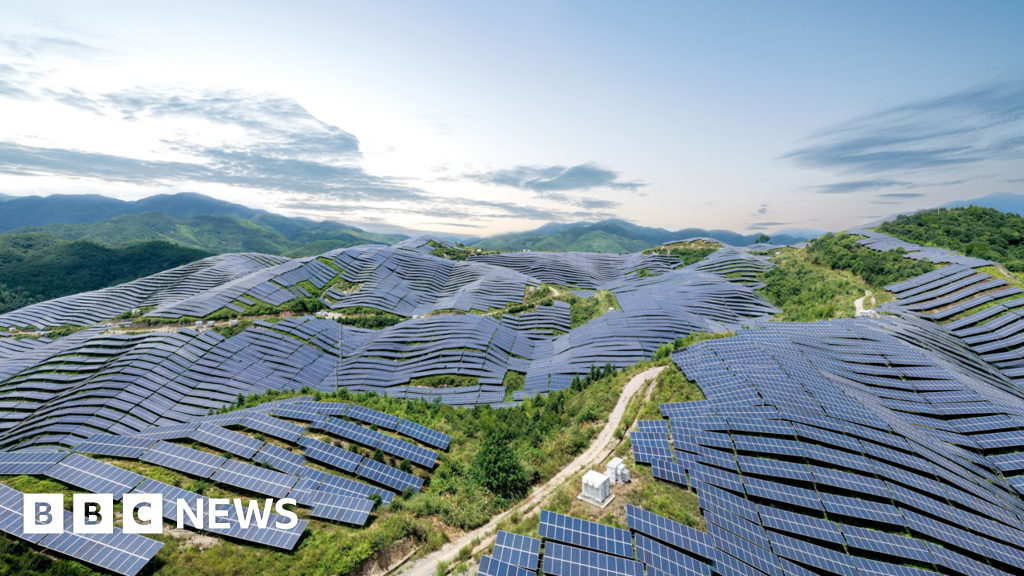
As the global community intensifies efforts to reduce carbon emissions, a significant milestone may have been reached. China, responsible for approximately 30% of global emissions, has witnessed a decline in its emissions over the twelve months leading up to May 2025. This marks the first time emissions have decreased even as the demand for power within the Chinese economy has grown rapidly. Historically, such reductions have only occurred during economic shocks, such as the COVID-19 pandemic, which slowed the country’s economic activity.
Given China’s substantial role in global emissions, this development is noteworthy.
“The world would have stabilised its emissions 10 years ago if it weren’t for China,”
remarked Lauri Myllyvirta of the Centre for Research on Energy and Clean Air. Myllyvirta’s research indicates a 1.6% reduction in China’s emissions compared to the previous year.
China’s Green Tech Surge
The reduction in emissions can be largely attributed to China’s massive investments in renewable energy, particularly wind and solar power. According to Myllyvirta, China has installed more than half of the global solar and wind generation capacity in recent years.
“The solar capacity that China installed last year is comparable to what the EU has overall,”
he noted, highlighting the rapid pace of growth.
Recent data from UK-based energy think tank Ember reveals that in April, wind and solar energy accounted for over a quarter of China’s electricity generation for the first time. Meanwhile, electricity generated from fossil fuels declined by 3.6% in the first four months of 2025 compared to the same period last year. These shifts are significant for an economy historically reliant on coal, as observed by Ember energy analyst Yang Biqing.
Yang cautions that coal will remain important for some time, as renewable sources alone do not provide a constant, stable electricity supply. However, China’s leadership in manufacturing green technology, including wind turbines and solar panels, positions it as a global leader in renewable energy. Chinese companies currently produce 60% of the world’s wind turbines and 80% of its solar panels.
Global Context and Comparisons
China’s progress in renewable energy is impressive, but its energy mix remains comparable to many Western economies. In the UK, renewables account for 46.3% of energy generation, while in the US, they make up just over 20%. Developed economies, once leading emitters, began reducing their emissions long ago by moving away from coal and energy-intensive industries.
China has long argued that its emissions trajectory follows the path of wealthier countries, whose economic growth was accompanied by increased emissions. Despite this, China’s per capita emissions now exceed those of the UK and EU and are comparable to Japan’s, although they remain lower than in the US.
Future Prospects for China’s Emissions
While China’s emissions have recently plateaued, this does not guarantee a sustained decline.
“You could plateau at that level for a long time, and that’s not a very helpful thing for climate action,”
warns Li Shuo of the Asia Society Policy Institute. External factors, such as geopolitical tensions and energy security concerns, could influence China’s energy policies.
However, the drive for energy security may encourage further investment in renewables. Christoph Nedopil Wang, director of the Griffith Asia Institute, suggests that China’s dominance in renewable technology could enhance its national security by reducing reliance on energy imports.
Current trade tensions with the West and China’s sluggish economy are unlikely to lead to a renewed surge in carbon emissions. Policymakers are focusing on low-emission sectors, such as IT, biotech, electric vehicles, and clean energy technologies, which are expected to grow.
Meeting International Climate Commitments
China still faces challenges in meeting its international climate commitments. Under the Paris Agreement, China aims to reduce its carbon intensity by more than 65% from 2005 levels by 2030. However, its progress was disrupted by the COVID-19 pandemic, achieving only a 7.9% reduction by the end of 2024.
To meet the 2030 target, China must reduce emissions in absolute terms. Myllyvirta emphasizes that the recent reduction is a start, but ambitious goal-setting and policy implementation are essential. Dr. Nedopil Wang suggests that China may take a more proactive role in global climate policy, potentially positioning itself as a leader on the issue.
At a recent climate conference, President Xi Jinping emphasized the need for action:
“Instead of talking the talk, we must walk the walk… we must turn our goals into tangible results.”
As China navigates its path forward, the world will be watching closely to see if this marks a turning point in global climate efforts.





